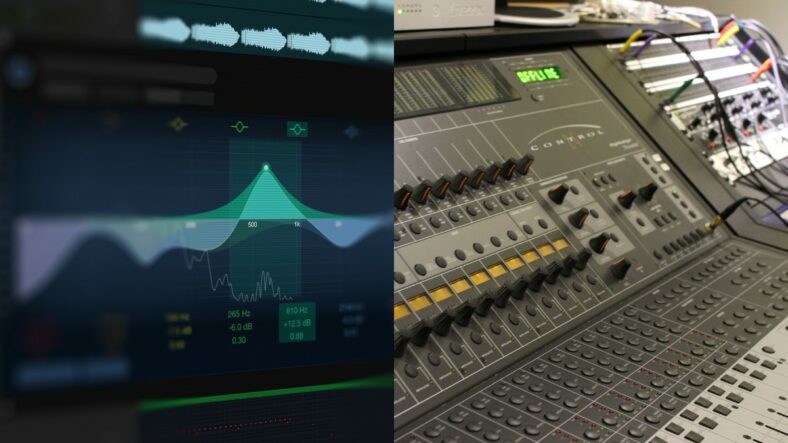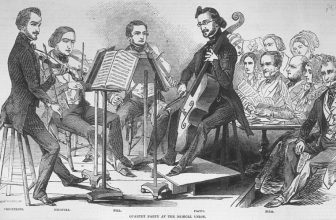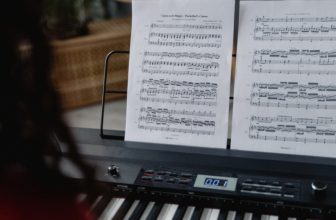What is Sampling in Music?

Sampling in music is the practice of reusing a portion of a sound recording in another recording, often used as an instrumental loop or a rhythm track in a different song. It is a key element that has shaped different genres throughout the history of music, primarily in hip-hop, as it gives artists a way to pay homage to classic recordings while adding their unique twist.
To understand the basics of sampling, it’s crucial to note that it’s more than mere copy-pasting. It’s an art of picking uniquely appealing sections from a piece of music and repurposing it to create a new audio piece, which is why tools and techniques used have evolved significantly since its inception. Early samplers were hardware devices, but today, music sampling is often conducted using digital tools and software.
Historically, sampling found its roots in the hip-hop culture of the 1970s, culminating in a new expressive form of music that could continue the heritage of past classics in a transformed manner. However, while sampling helps keep music alive and evolving, it’s wrapped in a myriad of legal and ethical considerations, often centered around copyrights and royalties. Therefore, any artist hoping to sample music must familiarize themselves with these aspects, and following a specific guide can help ensure they do it right.
Contents
- Sampling – At a Glance
- The Basics of Sampling
- History and Evolution of Sampling in Music
- Techniques and Tools Used for Sampling in Music
- Sampling in Different Genres: A Spotlight on Hip-Hop
- Legal and Ethical Considerations of Sampling
- How to Sample Music: A Step-by-step Guide
- Where to Find Samples for Music?
- Conclusion
Sampling – At a Glance
- Sampling in music is the practice of reusing a portion of a sound recording in another recording, often used as an instrumental loop or a rhythm track.
- It’s an art of picking uniquely appealing sections from a piece of music and repurposing it to create a new audio piece.
- Sample selection, editing techniques, hardware tools, and software can all be utilized to manipulate the original sample and construct unique compositions.
- Sampling has an illustrious history in hip-hop and how it’s used today, contributing to its development in other genres.
- While it’s a brilliant way to draw from existing work, it isn’t free from controversy, specifically with copyright laws and plagiarism issues.
- Understanding the legal and ethical guidelines is essential for any artist engaging in the art of sampling.
- Finally, A step-by-step guide is provided to help budding musicians embark on music sampling.
The Basics of Sampling
Music sampling is fundamentally a process of taking a snippet from a pre-existing recording and repurposing it into a new context to create a distinct piece of music. In effect, it’s about breathing new life into old recordings, often using elements like rhythm, melody, speech, or sound effects.
Rhythm and melody are the core elements taken from the original music piece that contribute to building a song’s structure in the new composition.
Speech samples, including quotes from movies or speeches, add a narrative layer and depth to the music.
Sound effects add an extra dimension, like a sonic seasoning on a musical piece that can elevate its impact.
Whether it’s a memorable guitar riff or a catchy drum beat, these individual slices can then be looped, sped up, slowed down, or manipulated in various other ways. That’s the beauty of sampling – it gives artists the flexibility to use existing sounds in fresh and inventive ways. It’s a practice widely triumphed in the music industry. After all, there’s no such thing as creating in a vacuum; all creative work builds on what came before.
History and Evolution of Sampling in Music
The origins of music sampling can be traced back to the 1940s, but it was in the 1970s where it really began to make waves as hip-hop pioneers started experimenting with vinyl records. These early artists, equipped with two turntables and a mixer, would isolate breaks in songs and loop them, thus forming the beats for new tracks.
Notable artists like Grandmaster Flash and the Furious Five, for instance, effectively utilized chopped-up fragments and loops. They were among the pioneers giving birth to the hip-hop genre.
In the late 70s and early 80s, hip-hop artists were using many jazz, funk, and R&B tracks of the period for their own songs. House music artists were taking samples from classic disco staples to get the crowd going.
In the late ’70s, the very first monophonic digital samplers were created. Computer Music Melodian and Fairlight CMI were the most famous ones, which were used by the likes of Stevie Wonder, Herbie Hancock, and Peter Gabriel. These samplers are some of the most iconic samplers in music history.
By the 1980s, advancements in technology brought forth the digital sampler. Musicians no longer needed to manually loop sections, and sampling became even more accessible. With the introduction of AKAI MPC, which stands for Music Production Center, sampling became extremely accessible to all musicians in the late 80s. Artists could create an entire song without going into a studio.
The Beastie Boys and Public Enemy were among those innovatively expanding the use of sampling in their music.
Jump to today, and sampling is lauded as an art form in itself. It’s harmoniously intertwined in nearly every genre, from hip-hop to EDM, demonstrating its evolution over time.
Overall, sampling’s history represents not only a technical development within music but also a cultural evolution. Its usage reflects ongoing dialogues about originality, creativity, and authenticity in music.
Techniques and Tools Used for Sampling in Music
In the realm of music sampling, various techniques are employed to exploit the full potential of the chosen piece. Techniques like layering, changing tempo, and pitch shifting are among the most commonly used.
Layering involves stacking multiple samples, often of differing textures, to create a denser sound. This helps in adding complexity and richness to the track.
Changing tempo involves adjusting the speed of the sample to match the beat of the new composition. It’s a way to make the sample seamlessly fit into the music.
Pitch shifting alters the sample’s original key to ensure it harmonizes with the new piece. This critical adjustment helps maintain the overall musicality.
As for tools, both hardware and software can be utilized for sampling in music:
Digital Audio Workstations (DAWs) like Ableton, Logic Pro, and FL Studio are software solutions with advanced sampling capabilities. They offer user-friendly interfaces and robust audio editing features.
Hardware tools, such as samplers and sequencers, are largely historical but still employed by some for their hands-on control and unique sound characteristics.
Thus, leveraging a combination of these tools and techniques empowers artists to transform a sample into something uniquely their own. Check out our samplers article to learn more about them.
Sampling in Different Genres: A Spotlight on Hip-Hop
While sampling has seeped into every corner of music across genres, its importance and influence in hip-hop cannot be overstated. In fact, sampling is often celebrated as a foundation upon which the hip-hop genre was built.
Early hip-hop artists used samples as their primary musical material, crafting entirely new soundscapes out of loops from pre-existing songs. Records from James Brown and other funk artists were favourite sources for beats.
With the advent of digital samplers, hip-hop artists expanded their sonic palette, incorporating everything from jazz to rock into their music, taking the genre to new expressive heights. Acts like A Tribe Called Quest and Gang Starr famously used jazz samples to create sophisticated, layered compositions.
Sampling in hip-hop has also allowed artists to embrace a political dimension by re-contextualizing audio snippets of speeches or interviews, adding deeper layers and meanings to their tracks.
From old-school to contemporary hip-hop, the art of sampling continues to thrive. It offers a way to bridge generations, to enable dialogue with the past, and to further evolve the sound of the future, thereby solidifying its enduring role and significance in the genre.
Legal and Ethical Considerations of Sampling
When discussing music sampling, the conversation inevitably leads to its legal and ethical considerations. While it’s a brilliant way to draw from existing work, it isn’t free from controversy, especially when it comes to copyright laws and plagiarism.
Legally, copyright laws protect original music creators from unauthorized sampling of their work. Violating these laws can lead to serious lawsuits. For instance, famous cases like Vanilla Ice’s “Ice Ice Baby” sampling Queen and David Bowie’s “Under Pressure” highlighted the need for legal permissions and royalties.
Ethically, there’s an ongoing debate in the music industry regarding whether sampling equates to plagiarism. While it’s generally accepted that parts of songs can be used for inspiration or tribute, copying extensive parts without enough transformation could be viewed as unoriginal or unethical.
To strike a balance, musicians must consider getting clearances, paying royalties, or sticking to works that are in the public domain. They might also consider engaging in ‘fair use’, a legal concept that allows limited use of copyrighted material without needing permission.
Navigating these legal and ethical issues is crucial for any artist engaging with the art of sampling, ensuring that this innovative practice can continue without infringing on the rights of original creators.
How to Sample Music: A Step-by-step Guide
Embarking on the journey of sampling music can be both exciting and intimidating. But fear not, this step-by-step guide will help set you on the right track:
1. Find Your Sample: Start by digging through your favorite music or explore different genres to find a unique piece that resonates with you. Listen for distinctive elements that strike your fancy/catch your ear.
2. Isolate the Sample: Using a DAW or other sampling tool, isolate the part of the music you wish to sample. It could be a rhythm, melody, or a specific sound effect – the choice is yours!
3. Manipulate the Sample: Experiment with techniques like pitch shifting, tempo change or reversing the sample to make it truly fit and sound unique in your composition.
4. Construct Your New Track: Now, layer your manipulated sample with other music elements like drums, vocals, or additional instrument tracks to build your new composition.
5. Clear the Sample Legally: Lastly, and most critically, you must seek legal clearance before releasing a track with a sampled work to avoid potential copyright infringement.
Remember, sampling is as much about creativity as it is about respect for the original work. Striking the right balance can lead to beautiful and innovative music.
Where to Find Samples for Music?
There are 3 ways you can take when looking for samples for your projects. You can search for royalty-free sample and free sample pack libraries, or use a paid–for sampling service, or record your own samples.
There are many royalty-free samples and free sample pack library websites on the internet, which you can use without hesitation for your tracks. A quick Google search can offer you many websites, but for the best ones, you might have to dig around a bit or check my article on best websites for free samples.
If you want a more diverse range of samples, you can use paid-for sampling services. These services provide libraries of pre-cleared tracks, including well-known songs as well as unique cuts of different decades and genres.
The most creative way is to create your own samples by recording instruments, or sounds, or whatever you like with a recorder. You can capture a melody, slice and manipulate it as you like in your own DAW and create unique sample bits. You can even capture the whole notes of an instrument to create your own virtual instrument in your DAW.
Conclusion
Throughout this exploration of music sampling, we’ve touched on its definition, historical evolution, innovative sampling techniques, key tools, and even its foundational role within the hip-hop genre. We’ve also taken a critical look at the legal and ethical considerations that surround copyright infringement and potential plagiarism, underscoring the importance of navigating these aspects wisely. Lastly, for those ready to dive in, we’ve provided a practical, step-by-step guide on how to begin sampling music.
In essence, music sampling is not just about repurposing past work, but it’s a profound form of creative expression that sparks dialogues, bridges generations and pushes the boundaries of music creation. As artists continue to explore this dynamic practice, sampling promises to shape the imaginative soundscape of future music.





